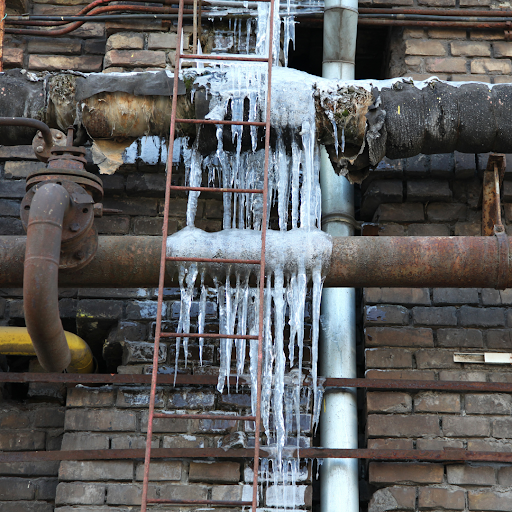Essential Advice for Avoiding Frozen Pipes in Winter Conditions
Essential Advice for Avoiding Frozen Pipes in Winter Conditions
Blog Article
What are your thoughts on How to Prevent Your Pipes From Freezing?

Winter can damage your plumbing, especially by freezing pipes. Right here's how to prevent it from happening and what to do if it does.
Introduction
As temperature levels decline, the threat of icy pipes increases, possibly bring about pricey repair work and water damage. Recognizing exactly how to prevent icy pipes is essential for homeowners in chilly climates.
Avoidance Tips
Insulating prone pipes
Cover pipes in insulation sleeves or utilize heat tape to secure them from freezing temperatures. Concentrate on pipelines in unheated or outside locations of the home.
Home heating techniques
Keep indoor spaces appropriately heated, particularly locations with plumbing. Open cabinet doors to enable cozy air to flow around pipelines under sinks.
How to determine frozen pipelines
Seek lowered water circulation from taps, uncommon odors or sounds from pipes, and visible frost on revealed pipelines.
Long-Term Solutions
Architectural modifications
Take into consideration rerouting pipelines away from outside walls or unheated locations. Add additional insulation to attic rooms, basements, and crawl spaces.
Updating insulation
Invest in top quality insulation for pipes, attics, and wall surfaces. Appropriate insulation helps keep constant temperatures and reduces the threat of icy pipes.
Protecting Outside Plumbing
Yard hoses and outside faucets
Detach and drain pipes garden pipes prior to winter. Set up frost-proof faucets or cover outdoor faucets with shielded caps.
Comprehending Icy Pipes
What triggers pipelines to freeze?
Pipes freeze when subjected to temperature levels below 32 ° F (0 ° C) for prolonged durations. As water inside the pipelines ices up, it expands, putting pressure on the pipeline wall surfaces and possibly creating them to break.
Threats and damages
Frozen pipes can result in water supply interruptions, residential property damages, and costly repairs. Ruptured pipelines can flood homes and create extensive architectural damage.
Indications of Frozen Piping
Recognizing icy pipelines early can prevent them from bursting.
What to Do If Your Pipes Freeze
Immediate actions to take
If you suspect frozen pipelines, keep taps open to soothe pressure as the ice melts. Utilize a hairdryer or towels soaked in hot water to thaw pipes slowly.
Verdict
Preventing frozen pipes needs positive measures and quick actions. By recognizing the reasons, signs, and preventive measures, homeowners can safeguard their plumbing throughout winter.
5 Ways to Prevent Frozen Pipes
Drain Outdoor Faucets and Disconnect Hoses
First, close the shut-off valve that controls the flow of water in the pipe to your outdoor faucet. Then, head outside to disconnect and drain your hose and open the outdoor faucet to allow the water to completely drain out of the line. Turn off the faucet when done. Finally, head back to the shut-off valve and drain the remaining water inside the pipe into a bucket or container. Additionally, if you have a home irrigation system, you should consider hiring an expert to clear the system of water each year.
Insulate Pipes
One of the best and most cost-effective methods for preventing frozen water pipes is to wrap your pipes with insulation. This is especially important for areas in your home that aren’t exposed to heat, such as an attic. We suggest using foam sleeves, which can typically be found at your local hardware store.
Keep Heat Running at 65
Your pipes are located inside your walls, and the temperature there is much colder than the rest of the house. To prevent your pipes from freezing, The Insurance Information Institute suggests that you keep your home heated to at least 65 degrees, even when traveling. You may want to invest in smart devices that can keep an eye on the temperature in your home while you’re away.
Leave Water Dripping
Moving water — even a small trickle — can prevent ice from forming inside your pipes. When freezing temps are imminent, start a drip of water from all faucets that serve exposed pipes. Leaving a few faucets running will also help relieve pressure inside the pipes and help prevent a rupture if the water inside freezes.
Open Cupboard Doors
Warm your kitchen and bathroom pipes by opening cupboards and vanities. You should also leave your interior doors ajar to help warm air circulate evenly throughout your home.
:strip_icc()/snow-outdoor-faucet-pipes-4af65d1e5e904fb1aa7bf74071fe5d89.jpg)
I stumbled upon that page on Winter Plumbing Precautions: Preventing Frozen Pipes while perusing the web. Do you know anybody else who is inquisitive about the topic? Please feel free to promote it. We truly appreciate reading our article about Helpful Tips to Prevent Frozen Pipes this Winter.
Get An Estimate Report this page